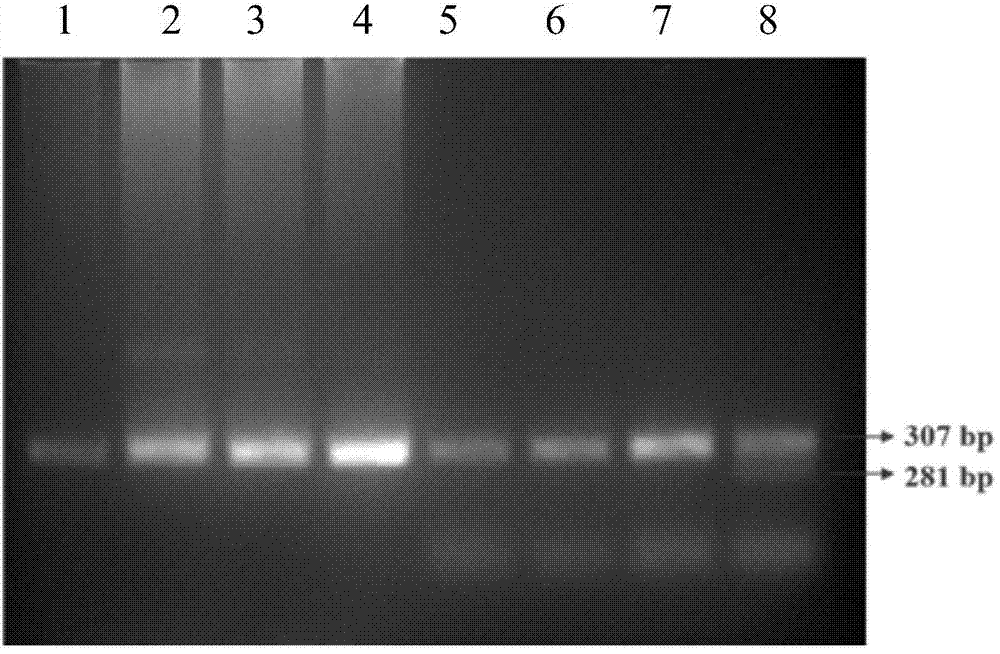Molecular marker method for rapidly detecting panonychus citri pyrethroid resistance
A technology of Panonychus citrus and pyrethroids, applied in the field of molecular biology, can solve the problems of increasing the time and complexity of operations, difficulty in extracting DNA from single-headed mites, etc., and achieves saving detection costs, large sample volume, and time saving Effect
- Summary
- Abstract
- Description
- Claims
- Application Information
AI Technical Summary
Problems solved by technology
Method used
Image
Examples
Embodiment Construction
[0025] The sources of reagents used in the embodiments of the present invention are as follows:
[0026] 2 × Phire animal tissue PCR buffer (Thermo Scientific company, the United States)
[0027] Phire hot start II DNA polymerase (Thermo Scientific, USA)
[0028] FastDigest Green Buffer (Thermo Scientific, USA)
[0029] BclI enzyme (Thermo Scientific company, USA)
[0030] PrimeSTAR Max premix (2×) (Takara, Japan)
[0031] The molecular marker method for rapidly diagnosing the pyrethroid resistance-related genes of Panonychus citrus mites, according to the following steps:
[0032] 1) Preparation of PCR amplification template: take Panonychus citrus as a sample, put each sample into a 200 μL PCR tube, add 3 μL ddH 2 O. Prepare a 10 μL small tip, burn the tip of the tip into a closed ball on the fire, and cool it down. Grind the Panonychus citrus in the PCR tube with the prepared small tip until there is no obvious tissue. The ground sample was used as the template for t...
PUM
 Login to View More
Login to View More Abstract
Description
Claims
Application Information
 Login to View More
Login to View More - R&D
- Intellectual Property
- Life Sciences
- Materials
- Tech Scout
- Unparalleled Data Quality
- Higher Quality Content
- 60% Fewer Hallucinations
Browse by: Latest US Patents, China's latest patents, Technical Efficacy Thesaurus, Application Domain, Technology Topic, Popular Technical Reports.
© 2025 PatSnap. All rights reserved.Legal|Privacy policy|Modern Slavery Act Transparency Statement|Sitemap|About US| Contact US: help@patsnap.com

